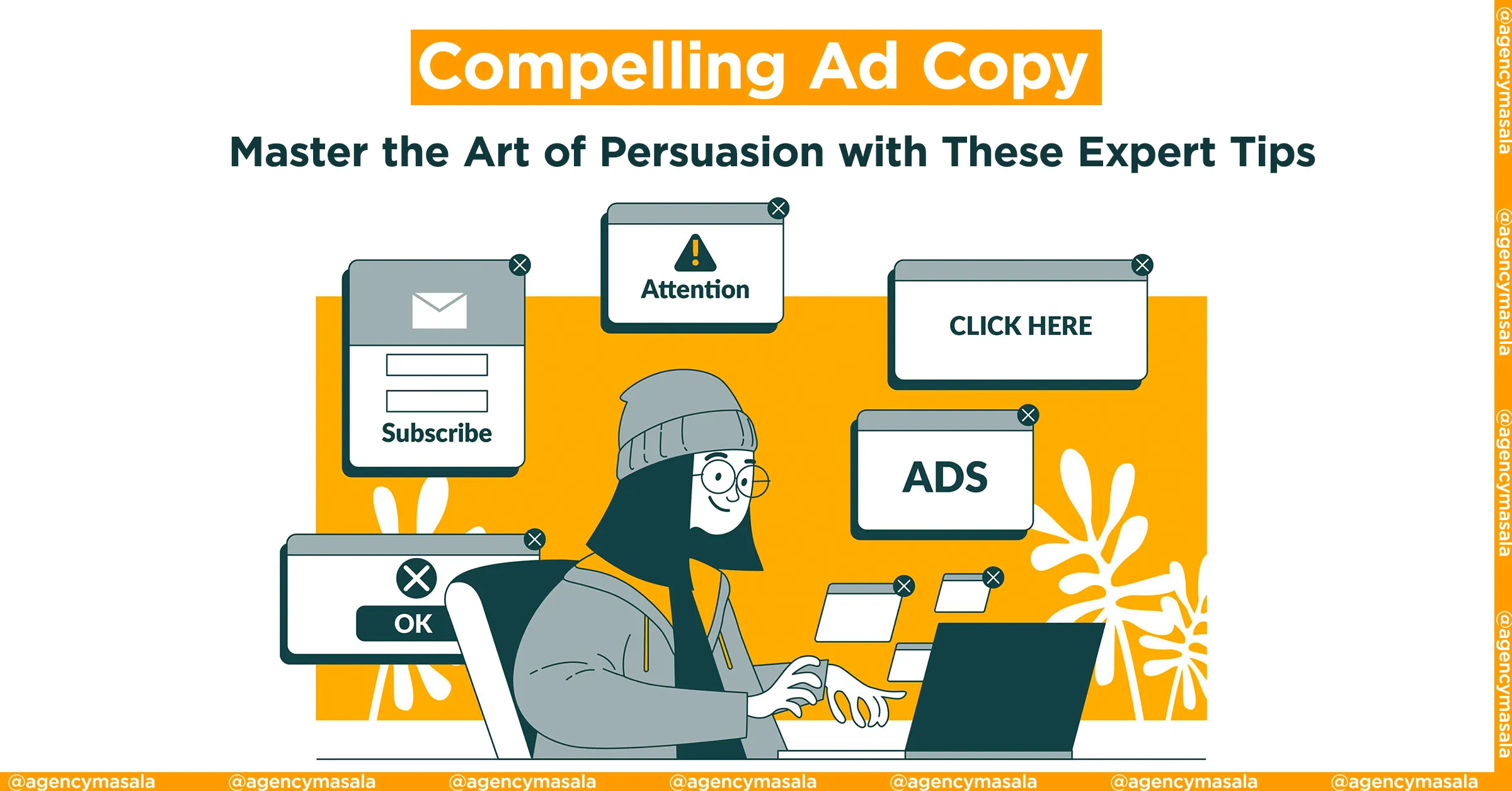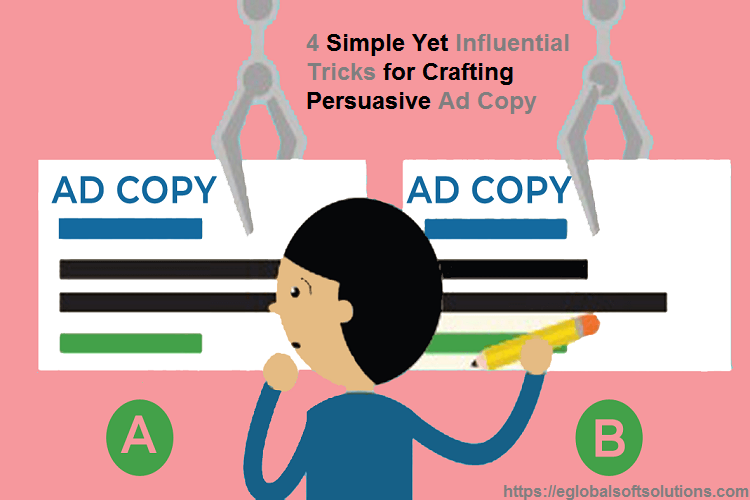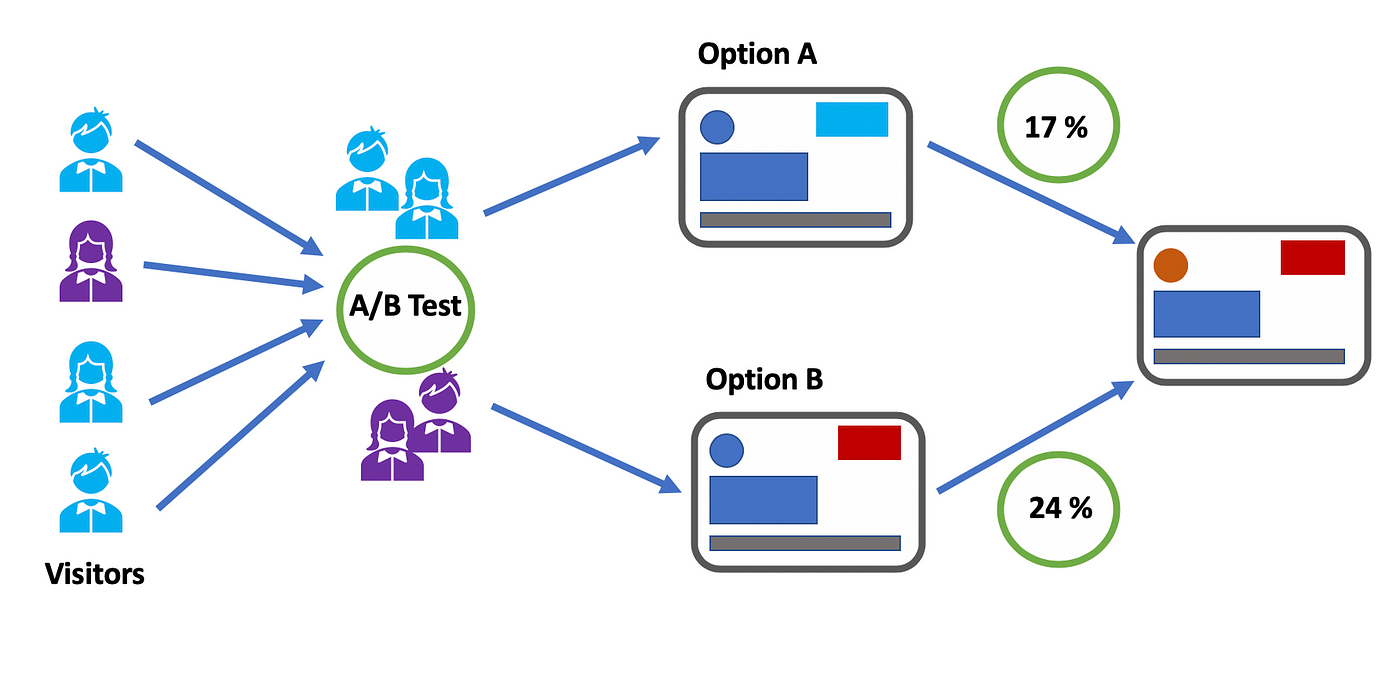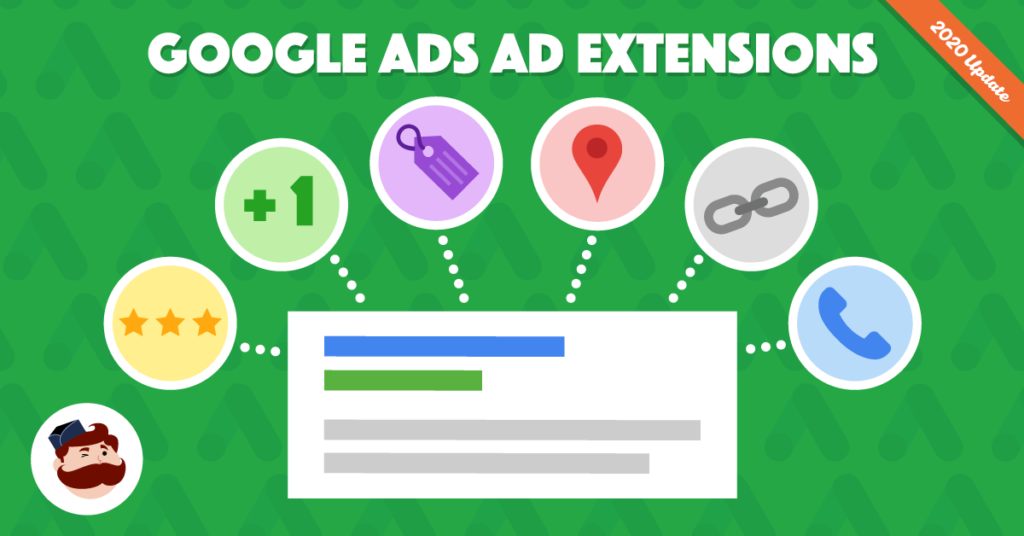Craft a Compelling Ad Copy
Creating compelling ads for Google Ads campaigns is more crucial than ever. The success of your online advertising efforts hinges on your ability to capture your audience’s attention and convince them to take action. Ad quality plays a pivotal role in determining the click-through rates (CTR) and conversions your campaigns will achieve. As Google Ads rely on a pay-per-click model, it’s not just about driving traffic to your website; it’s about driving the right traffic that converts into paying customers.
Ads that resonate with your target audience and address their needs and desires are more likely to generate clicks and conversions. When your ads are compelling, they stand out in the crowded digital space, enticing users to engage with your brand. Therefore, understanding how to craft compelling ads is not only beneficial but also essential for the success of your Google Ads campaigns.
Understanding Your Audience
Understanding your target audience is a foundational step in crafting compelling ads for Google Ads campaigns. Without a deep understanding of who your audience is, their preferences, and their needs, it’s challenging to create ads that resonate and drive engagement. In this section, we’ll explore the importance of conducting audience research and creating detailed buyer personas to guide your advertising efforts effectively.
Conducting Audience Research
Effective audience research is the cornerstone of successful advertising. It allows you to tailor your ads to the specific needs and interests of your target audience. Here are some essential steps and tips for conducting audience research effectively:
- Identify Your Audience Segments: Start by segmenting your audience into distinct groups based on demographics, psychographics, and behaviour. This segmentation helps you create more targeted ad campaigns.
- Demographics: Gather data on age, gender, location, income, and other relevant demographic factors that define your audience.
- Psychographics: Understand the psychographic traits of your audience, such as their values, interests, hobbies, and lifestyle choices. This information provides insights into their motivations.
- Online Behavior: Analyze how your audience behaves online. Consider the websites they visit, the social media platforms they use, and their search behaviour.
- Customer Surveys: Conduct surveys or questionnaires to collect direct feedback from your existing customers. Their insights can help you understand their pain points and preferences.
- Competitor Analysis: Examine your competitors’ customer base to identify overlaps and opportunities. This can also reveal the types of audiences they are targeting.
- Social Listening: Monitor social media conversations and online forums related to your industry or niche. This can provide real-time insights into what your audience is talking about.
Creating Buyer Personas
Once you’ve gathered data through audience research, the next step is to create detailed buyer personas. Buyer personas are fictional representations of your ideal customers, and they play a pivotal role in guiding your ad campaigns. Here’s how to create detailed buyer personas:
- Collect Information: Populate your buyer personas with the data you’ve gathered during audience research. This includes demographics, psychographics, and online behaviour.
- Personalize: Give each persona a name and a face. Describe their daily routines, challenges, and aspirations. Make them feel real and relatable.
- Identify Pain Points: Understand the problems and pain points your personas face. What challenges are they looking to overcome, and how can your product or service help them?
- Map the Buyer’s Journey: Determine where your personas are in the sales funnel. Are they in the awareness, consideration, or decision stage? Tailor your ad content to their specific needs at each stage.
- Align Messaging: Craft your ad copy and creative elements to address the specific needs and pain points of each buyer persona. Tailor your messaging to resonate with their motivations.
Creating buyer personas helps you humanize your target audience, making it easier to create ad campaigns that speak directly to their needs and desires. It ensures that your advertising efforts are laser-focused on the people most likely to convert.
Understanding your audience and developing buyer personas are ongoing processes. As consumer preferences evolve and your business grows, it’s essential to revisit and refine your audience research and personas to stay aligned with your target market. By doing so, you’ll be better equipped to create ads that connect with your audience on a deeper level and drive successful Google Ads campaigns.
Steps to create detailed buyer personas:
- Collect Information: Use the data from your audience research to populate your buyer personas.
- Personalize: Give each persona a name and a face. Describe their daily routines, challenges, and aspirations.
- Identify Pain Points: Understand the problems your personas face and how your product or service can solve them.
- Map the Buyer’s Journey: Determine where your personas are in the sales funnel and what information they need at each stage.
- Align Messaging: Craft your ad copy to address the specific needs and pain points of each persona.
Keyword Research and Selection
Keyword research and selection are fundamental aspects of crafting compelling ads for Google Ads campaigns. The keywords you choose determine when and where your ads will appear in search results, making them a critical factor in ad relevance and effectiveness. In this section, we will delve into the importance of keyword relevance and provide insights into how to conduct keyword research and utilize negative keywords effectively.
Keyword Relevance
Understanding the concept of keyword relevance is pivotal in ensuring your ads align with user intent and generate quality clicks. Here’s an exploration of the connection between keywords and ad relevance, along with tools and techniques for effective keyword research:
- Keyword Relevance and Ad Quality: The relevance of your chosen keywords directly impacts your ad’s quality score, which, in turn, affects your ad’s position and cost-per-click (CPC). Google rewards relevant ads with higher positions and lower costs.
- User Intent: Consider the intent behind each keyword. Are users looking for information, products, or specific services? Tailor your ad content to match the user’s intent.
- Keyword Match Types: Google offers different keyword match types, including broad match, phrase match, and exact match. Use these match types strategically to control the level of specificity in your ad targeting.
- Tools for Keyword Research: Utilize tools like Google Keyword Planner, SEMrush, Ahrefs, and Moz Keyword Explorer to discover relevant keywords. These tools provide insights into search volume, competition, and keyword variations.
- Long-Tail Keywords: Incorporate long-tail keywords into your campaigns. These are longer and more specific keyword phrases that often have less competition and higher conversion potential.
- Competitor Analysis: Analyze the keywords your competitors are targeting in their ads. This can help you identify valuable keywords you might have overlooked.
Negative Keywords
Understanding the significance of negative keywords and how to use them effectively can save your campaign budget and improve ad relevance. Here’s a discussion of the importance of negative keywords, along with strategies for identifying and implementing them:
- Significance of Negative Keywords: Negative keywords are phrases for which you do not want your ads to appear. They prevent your ads from displaying to users searching for irrelevant terms, thus conserving your budget for high-quality clicks.
- Keyword Research for Negatives: Conduct ongoing keyword research for negative keywords. Review your search query reports in Google Ads to identify irrelevant search terms triggering your ads.
- Broad and Phrase Match Negatives: Include negative keywords as both broad and phrase match to cover variations and close matches effectively. This ensures that you exclude a broader range of irrelevant queries.
- Competitor Analysis for Negatives: Analyze your competitors’ ads to identify keywords they are targeting that may not be relevant to your business. Add these as negative keywords to avoid appearing for the same queries.
- Seasonal and Trend-Based Negatives: Periodically review your campaign for seasonal or trend-based keywords that are no longer relevant. Add these as negatives to refine your targeting.
Strategies for identifying and using negative keywords:
- Review Search Query Reports: Regularly analyze search query reports in Google Ads to identify irrelevant search terms.
- Competitor Analysis: Look at your competitors’ ads to see if there are any irrelevant keywords they’re targeting.
- Use Broad and Phrase Match: Include negative keywords as broad and phrase match to cover variations and close matches.
Crafting Attention-Grabbing Headlines
Headlines are the first thing users see when they encounter your ad. They are the gatekeepers to your content. A compelling headline can significantly impact your CTR.
Statistics on the impact of compelling headlines:
- CTR Impact: Studies have shown that a well-crafted headline can increase CTR by up to 30%.
- First Impression: Your headline is your first impression. It needs to be compelling to grab attention.
Tips for Writing Headlines
Creating attention-grabbing headlines is both an art and a science. Here are some tips to get you started:
- Be Clear and Concise: Communicate your message succinctly.
- Use Action Words: Include action verbs that prompt users to take action.
- Include Keywords: Place keywords near the front of your headlines for better relevance.
- A/B Test: Continuously test different headline variations to see what resonates best with your audience.
Crafting Persuasive Ad Copy
Crafting persuasive ad copy is a crucial element of creating compelling ads for Google Ads campaigns. The ad copy is your opportunity to communicate the value of your product or service to potential customers, making them more likely to click on your ad and take the desired action. In this section, we’ll explore how to structure your ad copy effectively and how to leverage emotional appeals to connect with your audience.
Structuring Your Ad Copy
The structure of your ad copy plays a pivotal role in conveying your message effectively.
To structure your ad copy effectively:
- Headline: Grab attention and include a primary keyword.
- Description: Highlight the unique selling points of your product or service.
- Call to Action (CTA): Encourage users to take the desired action.
- Use Ad Extensions: Utilize ad extensions to provide additional information.
Leveraging Emotional Appeals
Emotions have a profound influence on user behaviour. To create persuasive ad copy, tap into these emotions.
Steps to leverage emotional appeals in ad copy:
- Identify Emotions: Determine which emotions are most relevant to your product or service.
- Tell a Story: Craft a narrative that elicits these emotions.
- Use Imagery: Incorporate images that resonate with the desired emotional response.
Need help with Google Ads Campaign? Contact Us.
A/B Testing and Optimization
A/B testing is the cornerstone of ad campaign success. It allows you to refine your ad elements for optimal performance.
Why A/B testing is essential:
- Data-Driven Decisions: A/B testing provides empirical data to make informed decisions.
- Continuous Improvement: Regular testing leads to ad copy and design improvements.
Analyzing and Optimizing
After running A/B tests, it’s essential to analyze the results and optimize your ads accordingly.
Steps to analyze and optimize ad campaigns:
- Data Analysis: Examine metrics like CTR, conversion rate, and ROI.
- Identify Winners: Determine which ad variants performed best.
- Implement Changes: Apply the winning elements to your ad campaigns.
- Repeat: Continuously run A/B tests to refine and improve your ads further.
Ad Extensions and Formats
Ad extensions and ad formats are powerful tools in Google Ads that enable you to enhance the visibility and relevance of your ads. They provide additional information and features that can attract more clicks and conversions. In this section, we’ll explore the benefits of utilizing ad extensions and provide insights into choosing the right ad format for your campaign.
Utilizing Ad Extensions
Ad extensions are additional pieces of information you can add to your ads to provide users with more context.
Benefits of utilizing ad extensions:
- Increased Visibility: Ad extensions make your ad stand out and occupy more space on the search results page.
- Relevance: Extensions allow you to provide specific details such as location, phone number, or product links.
Choosing the Right Ad Format
Google Ads offers various ad formats, each suited to different campaign goals.
Considerations for selecting the right ad format:
- Campaign Objectives: Align the ad format with your specific campaign objectives (e.g., lead generation, e-commerce).
- Ad Content: Choose the format that best showcases your product or service.
- Audience Behavior: Understand how your target audience interacts with different ad formats.
Mobile Optimization
Mobile optimization is paramount for the success of your Google Ads campaigns. With an increasing number of users accessing the internet and conducting searches on mobile devices, ensuring that your ads are mobile-friendly is essential. In this section, we’ll explore the importance of adopting a mobile-first approach and the concept of responsive design for mobile ad creation.
Mobile-First Approach
Mobile optimization is paramount in today’s mobile-centric world. A mobile-first approach ensures your ads look and perform well on smartphones and tablets.
Tips for creating mobile-friendly ads:
- Responsive Design: Use responsive design principles to ensure your ad adapts to different screen sizes.
- Mobile-Specific Ad Copy: Craft concise and impactful ad copy for mobile users.
- Fast Loading Times: Optimize images and code to reduce page load times on mobile devices.
Responsive Design
Responsive design is an essential aspect of mobile optimization. It ensures that your ads render correctly on various devices and screen sizes.
Best practices for responsive design in ad creation:
- Flexible Layouts: Create flexible layouts that adjust to different screen dimensions.
- Optimize Images: Use high-quality, lightweight images to minimize load times.
- Mobile-First Indexing: Consider Google’s mobile-first indexing, where mobile versions of websites are prioritized in search results.
Monitoring and Budget Management
Effective monitoring and budget management are crucial for the success of your Google Ads campaigns. Monitoring allows you to track the performance of your ads and make informed decisions, while budget management ensures that you allocate your resources effectively. In this section, we’ll explore the importance of setting a budget, strategies for allocating your budget, monitoring ad performance, and making real-time adjustments.
Setting a Budget
Budget planning is crucial for Google Ads campaigns. It determines how much you can spend and how effectively you can reach your audience.
Strategies for budget planning:
- Calculate ROI: Estimate your return on investment to determine an appropriate budget.
- Allocate Funds: Divide your budget among campaigns, ad groups, and keywords strategically.
- Adjust as Needed: Be prepared to adjust your budget based on campaign performance.
Monitoring and Adjusting
Once your campaigns are live, continuous monitoring and adjustments are necessary to maximize ROI.
Tools and methods for monitoring ad performance:
- Google Ads Dashboard: Use the Google Ads interface to monitor performance metrics.
- Google Analytics: Integrate Google Analytics to gain deeper insights into user behavior.
- Ad Scheduling: Adjust ad schedules to optimize ad delivery during peak hours.
How often should I run A/B tests for my ads?
The frequency of A/B tests depends on your campaign goals and traffic volume. In general, you should run A/B tests regularly, especially when making significant changes to your ads or landing pages. For high-traffic campaigns, testing weekly or biweekly may be appropriate. For smaller campaigns, monthly tests can suffice. The key is to test consistently and use data-driven insights to improve your ads over time.
Conclusion
Crafting compelling ads for Google Ads campaigns is a multifaceted process that requires a deep understanding of your audience, keyword research, persuasive copywriting, A/B testing, and continuous optimization. The importance of high-quality ads cannot be overstated, as they directly impact click-through rates and conversions. By following the strategies and techniques outlined in this guide, you can create ads that not only capture attention but also drive meaningful results for your business. Remember that ad crafting is an ongoing endeavour; always be ready to adapt and improve your campaigns to stay ahead in the dynamic world of online advertising.
Ready to take your Google Ads campaigns to the next level? Partner with Ubique Digital Solutions to boost your business to success. Our team of experts specializes in creating tailored ad strategies that drive real results. Contact us today to get started.
FAQs
Q: What is the average click-through rate (CTR) for Google Ads?
The average CTR for Google Ads can vary significantly depending on the industry, keywords, and ad quality. However, a benchmark CTR for a well-optimized campaign can range from 2% to 5%. It’s essential to monitor and improve your CTR continually to achieve the best results.
Q: How can I improve the quality score of my ads?
To improve the quality score of your ads, focus on improving ad relevance, click-through rate (CTR), and landing page experience. Ensure that your keywords are relevant to your ad copy, create compelling ads, and optimize your landing pages for a seamless user experience. Regularly monitor and optimize your campaigns for better results.
Q: Are there any free tools for keyword research?
Yes, there are several free keyword research tools available. Google Keyword Planner is a popular choice and offers valuable insights into keyword volume and competition. Additionally, tools like Ubersuggest and AnswerThePublic can provide keyword ideas and related search queries.

























